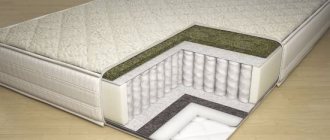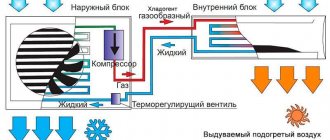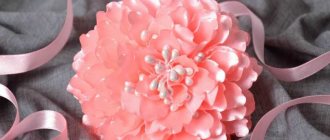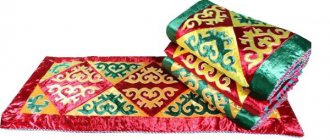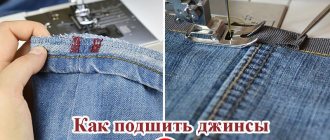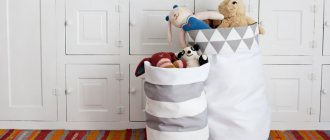To increase efficiency and overall well-being, the body needs quality rest. The most important aspect of good rest is good sleep. What will help improve your sleep quality? First of all, a comfortable sleeping place.
A comfortable mattress gives you sound sleep and good health. Therefore, you should pay special attention to your mattress.
A properly selected mattress will ensure a sound sleep. Manufacturers offer a wide selection of various materials with various fillers. Models range from budget to premium. To take into account all individual needs, you will have to shell out a large amount.
Finding a comfortable, high-quality mattress at a low price can be difficult. Sometimes it's easier to make a mattress yourself.
If the amount turns out to be too large for you, there is a way out - to make a mattress with your own hands. This solution will allow you to save money, create an ideal sleeping place for yourself, and thereby ensure healthy, sound sleep.
A mattress made by yourself can be no worse than an analogue from the manufacturer.
There are several types of mattresses that you can actually make yourself. These include:
- foam;
- orthopedic;
- from pillows.
With your own hands, you can create any mattress to your taste: either from ordinary foam rubber or from pillows.
If you have an old, worn-out mattress, just renovate it, it’s even cheaper!
An old mattress can easily be turned into a new one - you just need to properly repair it and replace the cover!
We create a comfortable mattress ourselves
This interesting process has a number of advantages. It is simple and does not require additional study of implementation technology. The materials available are available options. You can choose the size, height, and softness of the product yourself.
Creating a sleeping area depends on personal preference. It is important to understand that you can make the following products with your own hands:
- Orthopedic mattress;
- Foam;
- Using pillows.
These are the most common options that do not require special tools and materials that cannot be purchased in the store.
approximate cost
The total amount for creating bedding varies between 3-7 thousand. The final price is less than the cost of purchasing a finished product.
The cost depends on many factors and the overall design. If you need a small mattress to cover the sofa while you sleep, its price will not be too high. When a person tries to create a full-fledged orthopedic mattress for a bed with his own hands, he will definitely have to prepare for serious expenses.
See also: If the sofa in the interior is gray?
DIY foam mattress
Foam rubber is a common filler on the modern market. It is accessible and can be purchased by each of us. The second name of the synthetic material is polyurethane foam. Many people often wonder about using polyurethane foam in a mattress - what is it? PPU, foam rubber or polyurethane foam is constantly being improved as a material and it is no longer worth comparing the properties of today's material and the material of ten years ago. Scientists are constantly working on the composition of the material and they have managed to bring its performance closer to the standard safety level.
Currently, a large number of brands of foam rubber are produced; they differ not only in price, but also in quality; the main quality parameter of foam rubber is density. The most valuable brands for use in mattresses are foam rubber of medium and ultra-hardness, viscoelastic foam - they are comfortable, durable and very popular. Low-quality brands include low-density foam, it is soft and quickly breaks down.
There are a large number of types of this filler, they all differ in their performance properties:
- Elasticity;
- Hardness;
- Densities.
Selection of foam rubber for a mattress (foam rubber density)
The material selected as a filling element meets certain requirements that contribute to obtaining a good result. Foam rubber must be elastic and soft, and quickly return to its original form after use. Quality assessment is determined by the density of the product; for a mattress, values in the range of 25-40 kg/m3 are considered ideal. The selection of filler begins with taking into account its markings.
Here you will find out why foam mattresses are in good demand
Preparation of materials and tools
The purchase of the required materials depends on the choice of purpose of the finished product. For the stationary model, additional spring blocks are purchased. For the portable version, you only need polyurethane foam. Construction using the following materials and tools:
- Dense foam rubber - required to create a frame;
- Filler, which is designated by the markings EL, HR and VE;
- It is possible to supplement the structure with coconut coir or other materials;
- Glue for fixing the product, purchased specifically for foam rubber;
- Fabric (natural materials are great).
Additional tools you will need are a tape measure, a knife, scissors, and a machine for sewing a cover.
Sewing a mattress
Before manufacturing the product, you need to measure the sleeping area. Next, the frame itself is assembled; for this, a body is made of dense polyurethane foam, the thickness of which should be at least 5 cm. The bars of the material must be laid out on a flat surface, then they are glued together. It is recommended to place a stiffer sheet of foam rubber on the top layer; this is more comfortable for the body and back.
Next, the filler is carefully laid, preferably in solid sheets, about 15 cm thick.
Important! Foam rubber in the form of scraps will not be a good filler; the base must be solid.
How to sew a mattress cover?
This is the next step in making a mattress, for which you will need fabric, a sewing machine and threads matched to the color. The filled frame is measured and the parts are cut out, leaving three cm on each side for the seam. The cover must fit snugly to the product and it must be tightened with outside help. It is necessary to have a zipper for comfortable cleaning of the mattress.
It is necessary to select natural fabric as a material, since it is not allergenic.
To keep your homemade mattress clean, you need to sew a mattress cover.
An interesting article about what a topper or mattress pad is, their types
Troubleshooting
Next, depending on the damage that occurs, the following actions are carried out.
Springs
Small holes or scuffs
They can be hidden using patches. Usually, pieces of fabric needed for minor repairs are sold along with the sleeping product. Patches, depending on the type of fabric, are sewn onto the damaged area using a hidden seam or glued with furniture glue. For such a minor restoration, it is not necessary to remove the mattress cover; it is quickly carried out on the assembled product.
Stains
If stains cannot be removed by detergents, if they are small, they can be hidden using patches. If the upholstery fabric is plain, then you can show your imagination and hide dirt under the original appliqués.
If the upholstery is bright or heavily soiled, the stains cannot be hidden; all that remains is to replace the covering completely. To do this, a seam is ripped out on one side of the product, the upholstery cover is pulled off, a new one is cut out according to its dimensions, sewn and put on the mattress. How to sew up after repair so that it is not noticeable? To do this, it is better to take a thread that matches the fabric and carefully sew the edges using a blind stitch. Such a replacement can also be carried out in the presence of minor damage, if the fabric has lost color or is simply tired. For convenience, you can not sew up the edge of the cover, but insert a zipper - this will allow you to wash the mattress cover using a washing machine if necessary.
Old filler
Filling that has lost its orthopedic qualities must be partially or completely replaced. In a partial replacement, damaged areas that have lost elasticity are removed and new ones of the same thickness are installed in their place.
To hide the replacement areas (the difference may be felt after the repair), it is recommended to lay an additional layer of filler on top, suitable for the size of the product. After this, the cover is put on and sewn or zipped.
For springless mattresses, such repairs are sufficient, but for spring mattresses it is advisable to check the spring blocks, clean them of dirt, and lubricate them with a special product for springs. This measure will increase the hygiene of the sleeping place and will prevent the occurrence of unpleasant squeaking.
Broken springs
Broken springs that have lost their elasticity must be replaced with new ones. The replacement process is simple, but long, because in order to get to the damaged parts, you need to remove the mattress cover and remove layers of soft filler.
Broken parts are identified, removed, and then new parts are installed.
They can be firmly secured by sewing them into separate bags or attaching them with wire to adjacent springs (the installation principle depends on the structure of the spring block). Next, the assembly is performed in the reverse order: layers of filler are laid, and then the cleaned, restored cover is put on.
Timely implementation of minor repairs allows you to get a comfortable night's sleep and extend the life of your sleeping place for years, postponing the need to purchase a new mattress for a long time.
DIY orthopedic mattress
This type of product can also be made at home yourself. Only spring blocks will be required, and as a filler you need to purchase felt and coconut coir. First, the springs are tied together for alignment, then several layers of felt are applied, which are glued together. The next stage is laying out the coir.
Important! The coconut filling should be no thicker than two centimeters.
Additionally, you can add artificial latex, which can be replaced with foam rubber. Alternating layers depends on personal needs.
And for a complete understanding of how to make a mattress at home yourself, you can watch this video:
Materials and tools
It should be immediately clear that you will not be able to create a product with a memory effect on your own. But something for one-time use, a sofa or the same garden swing, is very simple.
Think in advance whether you will make a spring mattress or a springless version. In the first case, you will need to additionally buy a ready-made spring box. From the photo and video instructions you can easily determine what exactly you need.
The set of basic materials consists of the following elements:
- high-density foam for the frame;
- softer foam rubber, which will serve as a filler;
- glue for gluing the box;
- thick fabric for a mattress cover.
The tools you need to prepare are a tape measure, scissors, a sharp knife, a sewing machine, cutting materials, etc.
How to sew a mattress cover?
This part perfectly protects the mattress from dirt and reduces wear. You can make the model in the form of a regular bag; all you need to do is take the fabric and wrap the mattress, and then sew the seams. A more complex option is a sheet with an elastic band; this requires sewing it along the edge of the cut fabric. The material for the product is selected to be wear-resistant and easy to clean.
Preparing fabric for stitching
The stitch can be done either manually or using a machine. The traditional option would be straight lines, which in the future will turn into small squares. If the craftswoman wants to add originality to the stitch, then you can find patterns where there are different snowflakes or flowers on the outer part of the product.
Preparing fabric for stitching begins with applying a pattern to the material. The mattress will be sewn along the stitch.
Attention! If you want to decorate the product with figures or designs, then you need to make it on paper in advance. Then, after making the pattern, the needlewoman only needs to attach the sketch to the material and simply trace it. Below is how to sew a mattress into a stroller
Below is how to sew a mattress into a stroller.
Option for girls
How to make a mattress harder or softer?
It is important to understand that if you feel discomfort in your sleep due to an uncomfortable mattress, you need to make adjustments to it.
It is possible to make the mattress softer or harder. This is done using a mattress pad. To increase rigidity, coconut coir is used as a filler, and for additional softness, foam rubber can be added. The thickness of the product should not exceed 10 cm, otherwise discomfort will occur. Considering the capabilities of a modern person who is not limited in purchasing materials for his experiments, sewing a mattress and its accessories is a simple task that requires only perseverance. The main thing is to choose the right insides of the product, purchase high-quality fabric for finishing and do the work carefully and carefully. The process itself will not cause difficulties, and even children can participate in some processes. It is important to remember that the finished product must be thoroughly dried in the fresh air.

